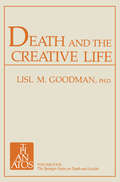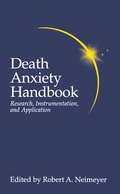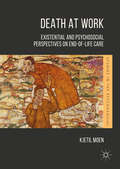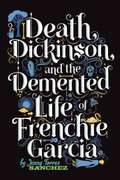- Table View
- List View
Death and the City: On Loss, Mourning, and Melancholia at Work
by Susan KahnOrganisational collapse is part of our vernacular. Enron, Woolworths, Lehman's, Bank of America, Rover, BOAC, Northern Rock - these failures are part of our cultural experience of work. At a time when working lives are often vulnerable and organisational mortality is under threat from technology and the economy the consequences of organizational death are worthy of attention. Organisations can face many different endings - sharp and brutal, premature, or carefully planned and premeditated - all these endings have emotional collateral damage. We are working in an environment where crises, failure, and demise are everyday features. Death and the City provides an in-depth portrait of an organisation in a palliative state. It transports the analytic concepts of mourning and melancholia and of the death drive into the workplace, and brings this important, but under explored, stream of psychoanalytic thought to the fore as a means of interrogating and further understanding organisational life. .
Death and the City: On Loss, Mourning, and Melancholia at Work
by Susan KahnOrganisational collapse is part of our vernacular. Enron, Woolworths, Lehman's, Bank of America, Rover, BOAC, Northern Rock - these failures are part of our cultural experience of work. At a time when working lives are often vulnerable and organisational mortality is under threat from technology and the economy the consequences of organizational death are worthy of attention. Organisations can face many different endings - sharp and brutal, premature, or carefully planned and premeditated - all these endings have emotional collateral damage. We are working in an environment where crises, failure, and demise are everyday features. Death and the City provides an in-depth portrait of an organisation in a palliative state. It transports the analytic concepts of mourning and melancholia and of the death drive into the workplace, and brings this important, but under explored, stream of psychoanalytic thought to the fore as a means of interrogating and further understanding organisational life. .
Death and the Creative Life: Conversations with Prominent Artists and Scientists (pdf) (The Springer Series on Death and Suicide #4)
by Lisl Marburg GoodmanDeath And Trauma: The Traumatology Of Grieving (Series in Trauma and Loss)
by Charles R. Figley Brian E. Bride Nicholas MazzaFirst published in 1997. Although the fields of thanatology and traumatology have received robust attention during their parallel development, little effort has been made to address their overlapping territory. This volume is the first attempt to do so. Specifically, the purpose of this book is fourfold. First is to provide a theoretical bridge between the two fields by providing conceptual terminology, such as defining normal versus dysfunctional bereavement and the meaning and range of death-related PTSD. The second confirms and illustrates the identical patterns of reactions between those who survive the death of a loved one and those who survive other traumatic events. Next the book applies the most useful theoretical models to the bereavement experience, and in turn acknowledges the utility of generalizing bereavement models to other traumatic experiences; in doing so, the two fields can enrich each other. Similarly, the volume's final purpose is to identify and apply the most useful and effective approaches in traumatology literature to the study, diagnosis and treatment of traumatic stressors other than death.
Death And Trauma: The Traumatology Of Grieving (Series in Trauma and Loss)
by Charles R. Figley Brian E. Bride Nicholas MazzaFirst published in 1997. Although the fields of thanatology and traumatology have received robust attention during their parallel development, little effort has been made to address their overlapping territory. This volume is the first attempt to do so. Specifically, the purpose of this book is fourfold. First is to provide a theoretical bridge between the two fields by providing conceptual terminology, such as defining normal versus dysfunctional bereavement and the meaning and range of death-related PTSD. The second confirms and illustrates the identical patterns of reactions between those who survive the death of a loved one and those who survive other traumatic events. Next the book applies the most useful theoretical models to the bereavement experience, and in turn acknowledges the utility of generalizing bereavement models to other traumatic experiences; in doing so, the two fields can enrich each other. Similarly, the volume's final purpose is to identify and apply the most useful and effective approaches in traumatology literature to the study, diagnosis and treatment of traumatic stressors other than death.
Death Anxiety and Clinical Practice
by Robert LangsRobert Langs argues that death anxiety is neglected - in part, because of treatment failures due to countertransference interferences during treatment. He then discusses the technical issues connected with this, whilst introducing the controversial concept that mental activities are derived from immune system activities.
Death Anxiety and Clinical Practice
by Robert LangsRobert Langs argues that death anxiety is neglected - in part, because of treatment failures due to countertransference interferences during treatment. He then discusses the technical issues connected with this, whilst introducing the controversial concept that mental activities are derived from immune system activities.
Death Anxiety and Religious Belief: An Existential Psychology of Religion (Scientific Studies of Religion: Inquiry and Explanation)
by Jonathan Jong Jamin HalberstadtThere are no atheists in foxholes; or so we hear. The thought that the fear of death motivates religious belief has been around since the earliest speculations about the origins of religion. There are hints of this idea in the ancient world, but the theory achieves prominence in the works of Enlightenment critics and Victorian theorists of religion, and has been further developed by contemporary cognitive scientists. Why do people believe in gods? Because they fear death.Yet despite the abiding appeal of this simple hypothesis, there has not been a systematic attempt to evaluate its central claims and the assumptions underlying them. Do human beings fear death? If so, who fears death more, religious or nonreligious people? Do reminders of our mortality really motivate religious belief? Do religious beliefs actually provide comfort against the inevitability of death? In Death Anxiety and Religious Belief, Jonathan Jong and Jamin Halberstadt begin to answer these questions, drawing on the extensive literature on the psychology of death anxiety and religious belief, from childhood to the point of death, as well as their own experimental research on conscious and unconscious fear and faith. In the course of their investigations, they consider the history of ideas about religion's origins, challenges of psychological measurement, and the very nature of emotion and belief.
Death Anxiety and Religious Belief: An Existential Psychology of Religion (Scientific Studies of Religion: Inquiry and Explanation)
by Jonathan Jong Jamin HalberstadtThere are no atheists in foxholes; or so we hear. The thought that the fear of death motivates religious belief has been around since the earliest speculations about the origins of religion. There are hints of this idea in the ancient world, but the theory achieves prominence in the works of Enlightenment critics and Victorian theorists of religion, and has been further developed by contemporary cognitive scientists. Why do people believe in gods? Because they fear death.Yet despite the abiding appeal of this simple hypothesis, there has not been a systematic attempt to evaluate its central claims and the assumptions underlying them. Do human beings fear death? If so, who fears death more, religious or nonreligious people? Do reminders of our mortality really motivate religious belief? Do religious beliefs actually provide comfort against the inevitability of death? In Death Anxiety and Religious Belief, Jonathan Jong and Jamin Halberstadt begin to answer these questions, drawing on the extensive literature on the psychology of death anxiety and religious belief, from childhood to the point of death, as well as their own experimental research on conscious and unconscious fear and faith. In the course of their investigations, they consider the history of ideas about religion's origins, challenges of psychological measurement, and the very nature of emotion and belief.
Death Anxiety Handbook: Research, Instrumentation, And Application (Death, Education, Aging and Health Care)
by Robert A. NeimeyerPresenting a broad coverage of this major area of studies on death and dying, this book provides a systematic presentation of the six most widely used and best validated measures of death anxiety, threat and fear. These chapters consider the available data on the psychometric properties of each instrument and summarize research using them, and also supply a copy of the instrument with scoring keys - to facilitate their use. In addition, other chapters make use of the instrumentation by pursuing questions of applied significance in various health care settings nursing homes, psychotherapy, death education, near death experiences, persons with AIDS, experiences of bereaved young adults.; An introductory chapter introduces the major philosophical and psychological theories of the causes and consequences of death anxiety in adult life, and a closing chapter gives an overview of death education and how this affects attitudes towards death and dying.
Death Anxiety Handbook: Research, Instrumentation, And Application (Death, Education, Aging and Health Care)
by Robert A. NeimeyerPresenting a broad coverage of this major area of studies on death and dying, this book provides a systematic presentation of the six most widely used and best validated measures of death anxiety, threat and fear. These chapters consider the available data on the psychometric properties of each instrument and summarize research using them, and also supply a copy of the instrument with scoring keys - to facilitate their use. In addition, other chapters make use of the instrumentation by pursuing questions of applied significance in various health care settings nursing homes, psychotherapy, death education, near death experiences, persons with AIDS, experiences of bereaved young adults.; An introductory chapter introduces the major philosophical and psychological theories of the causes and consequences of death anxiety in adult life, and a closing chapter gives an overview of death education and how this affects attitudes towards death and dying.
Death at Work: Existential and Psychosocial Perspectives on End-of-Life Care (Studies in the Psychosocial)
by Kjetil MoenThis book explores how, in encounters with the terminally ill and dying, there is something existentially at stake for the professional, not only the patient. It connects the professional and personal lives of the interviewees, a range of professionals working in palliative and intensive care. Kjetil Moen discusses how the inner and outer worlds, the psychic and the social, and the existential and the cultural, all inform professionals’ experience of work at the boundary between life and death. Death at Work is written for an academic audience, but is accessible to and offers insights for practitioners in a variety of fields.
Death at Work: Existential and Psychosocial Perspectives on End-of-Life Care (Studies in the Psychosocial)
by Kjetil MoenThis book explores how, in encounters with the terminally ill and dying, there is something existentially at stake for the professional, not only the patient. It connects the professional and personal lives of the interviewees, a range of professionals working in palliative and intensive care. Kjetil Moen discusses how the inner and outer worlds, the psychic and the social, and the existential and the cultural, all inform professionals’ experience of work at the boundary between life and death. Death at Work is written for an academic audience, but is accessible to and offers insights for practitioners in a variety of fields.
Death Attitudes and the Older Adult: Theories Concepts and Applications (Series in Death, Dying, and Bereavement)
by Adrian TomerThis innovative and informative new text bridges the fields of gerontology and thanatology.
Death Attitudes and the Older Adult: Theories Concepts and Applications (Series in Death, Dying, and Bereavement)
by Adrian TomerThis innovative and informative new text bridges the fields of gerontology and thanatology.
Death Benefits: How Losing a Parent Can Change an Adult's Life--for the Better
by Jeanne SaferWhen psychotherapist Jeanne Safer lost her mother, she was determined to turn her loss into an opportunity for insight and growth. Through her own experience, her work with patients, and in-depth interviews, Safer shows that the death of a parent can be a catalyst for change. In this updated paperback edition, Safer includes a helpful resource section, including information on hospice care, rehabilitation programs, and more. Bold, surprising, and compassionate, Death Benefits challenges the idea that loss must simply be endured or overcome.
Death by Design: Capital Punishment As a Social Psychological System (American Psychology-Law Society Series)
by Craig HaneyHow can otherwise normal, moral persons - as citizens, voters, and jurors - participate in a process that is designed to take the life of another? In DEATH BY DESIGN, research psychologist Craig Haney argues that capital punishment, and particularly the sequence of events that lead to death sentencing itself, is maintained through a complex and elaborate social psychological system that distances and disengages us from the true nature of the task. Relying heavily on his own research and that of other social scientists, Haney suggests that these social psychological forces enable persons to engage in behavior from which many of them otherwise would refrain. However, by facilitating death sentencing in these ways, this inter-related set of social psychological forces also undermines the reliability and authenticity of the process, and compromises the fairness of its outcomes. Because these social psychological forces are systemic in nature - built into the very system of death sentencing itself - Haney concludes by suggesting a number of inter-locking reforms, derived directly from empirical research on capital punishment, that are needed to increase the fairness and reliability of the process. The historic and ongoing public debate over the death penalty takes place not only in courtrooms, but also in classrooms, offices, and living rooms. This timely book offers stimulating insights into capital punishment for professionals and students working in psychology, law, criminology, sociology, and cultural area studies. As capital punishment receives continued attention in the media, it is also a necessary and provocative guide that empowers all readers to come to their own conclusions about the death penalty.
Death, The Dead and Popular Culture (Emerald Studies in Death and Culture)
by Ruth Penfold-MounceWithin popular culture, death is not the end, but instead a space where the dead can exert agency whilst entertaining the consumer. Popular culture enables the dead to be consumed by the living on a mass global scale, actively engaging them with issues of mortality. This book develops the sociological intersectionality between death, the dead and popular culture by examining the agency of the dead. Drawing upon the posthumous careers of the celebrity dead and organ transplantation mythology in popular culture the dead are shown to not be hampered by death but to benefit from the symbolic and economic value they can generate. Meanwhile the fictional dead – the Undead and the dead in crime drama – are conceptualised through morbid sensibility and morbid space to mobilise consumer consideration of mortality and even challenge the public wisdom that contemporary Western society is in death denial and that death is taboo. Death and the dead, within the parameters of popular culture, form a palatable and normative bridge between viewers and mortality, iterating the innate value and hidden depths of popular culture in the study of contemporary society. This book will be of interest to anybody who researches death, popular culture and questions of mortality.
Death, The Dead and Popular Culture (Emerald Studies in Death and Culture)
by Ruth Penfold-MounceWithin popular culture, death is not the end, but instead a space where the dead can exert agency whilst entertaining the consumer. Popular culture enables the dead to be consumed by the living on a mass global scale, actively engaging them with issues of mortality. This book develops the sociological intersectionality between death, the dead and popular culture by examining the agency of the dead. Drawing upon the posthumous careers of the celebrity dead and organ transplantation mythology in popular culture the dead are shown to not be hampered by death but to benefit from the symbolic and economic value they can generate. Meanwhile the fictional dead – the Undead and the dead in crime drama – are conceptualised through morbid sensibility and morbid space to mobilise consumer consideration of mortality and even challenge the public wisdom that contemporary Western society is in death denial and that death is taboo. Death and the dead, within the parameters of popular culture, form a palatable and normative bridge between viewers and mortality, iterating the innate value and hidden depths of popular culture in the study of contemporary society. This book will be of interest to anybody who researches death, popular culture and questions of mortality.
Death, Desire and Loss in Western Culture
by Jonathan DollimoreDeath, Desire and Loss in Western Culture is a rich testament to our ubiquitous preoccupation with the tangled web of death and desire. In these pages we find nuanced analysis that blends Plato with Shelley, Holderlin with Foucault. Dollimore, a gifted thinker, is not content to summarize these texts from afar; instead, he weaves a thread through each to tell the magnificent story of the making of the modern individual.
Death, Desire And Loss In Western Culture (PDF)
by Jonathan DollimoreDeath, Desire and Loss in Western Culture is a rich testament to our ubiquitous preoccupation with the tangled web of death and desire. In these pages we find nuanced analysis that blends Plato with Shelley, Holderlin with Foucault. Dollimore, a gifted thinker, is not content to summarize these texts from afar; instead, he weaves a thread through each to tell the magnificent story of the making of the modern individual.
Death, Dickinson, and the Demented Life of Frenchie Garcia
by Jenny Torres SanchezIt is the summer after Frenchie Garcia's senior year, and she can't come to grips with the death of Andy Cooper. Her friends don't know that she had a secret crush on her classmate, and they especially don't know that she was with Andy right before he committed suicide. The only person who does know is Frenchie's imaginary pal Em (a.k.a. Emily Dickinson), who she hangs out with at the cemetery down the street.When Frenchie's guilt and confusion come to a head, she decides there is only one way to truly figure out why Andy chose to be with her during his last hours. While exploring the emotional depth of loss and transition to adulthood, Sanchez's sharp humor and clever observations bring forth a richly developed voice.
Death, Distress, and Solidarity: Special Issue "OMEGA Journal of Death and Dying"
by Robert KastenbaumIn preparing this special issue of "Omega: The Journal of Death and Dying" - we choose to consider solidarity in a somewhat larger perspective than the other one usually adopted by a clear majority of social support studies. This perspective gives priority to microscopic, immediate, direct transactions between a focal individual - the one affected by the prospect of soon to come death and two classes of people: those included in the core of that person's personal network and the health care personnel treating and accompanying soon to die people, many of them already advanced into agony.
Death, Distress, and Solidarity: Special Issue "OMEGA Journal of Death and Dying"
by Robert KastenbaumIn preparing this special issue of "Omega: The Journal of Death and Dying" - we choose to consider solidarity in a somewhat larger perspective than the other one usually adopted by a clear majority of social support studies. This perspective gives priority to microscopic, immediate, direct transactions between a focal individual - the one affected by the prospect of soon to come death and two classes of people: those included in the core of that person's personal network and the health care personnel treating and accompanying soon to die people, many of them already advanced into agony.
The Death Drive: A Contemporary Introduction (Routledge Introductions to Contemporary Psychoanalysis)
by Rossella ValdrèThis comprehensive yet accessible book analyses the clinical and historical experiences that led to the radical, complex and fundamental psychoanalytic concept of the death drive.In The Death Drive: A Contemporary Introduction, Rossella Valdrè traces the path that led Sigmund Freud to theorise this key concept in his essay, Beyond the Pleasure Principle. She considers its roots in Freud’s experiences of war trauma and his assessment of the human compulsion to repeat, as well as its consequences on his later theoretical and clinical work. Short vignettes from the clinician’s room and examples from books and films introduce the reader to the birth and development of the concept, its biological and philosophical roots and its many clinical implications. Valdrè also reviews its varied reception among post-Freudians, and examines the controversies and questions that the death drive commonly engenders within the psychoanalytic community. She concludes by considering the death drive through the medium of art, its relationship with sublimation and the confirmation neuroscience is beginning to provide.Written in a style that is at once accessible and precise, this book is an invaluable tool to students and psychoanalysts in training approaching the theory for the first time, as well as practising analysts, postgraduate students and scholars familiar with the concept and looking to explore it further.














